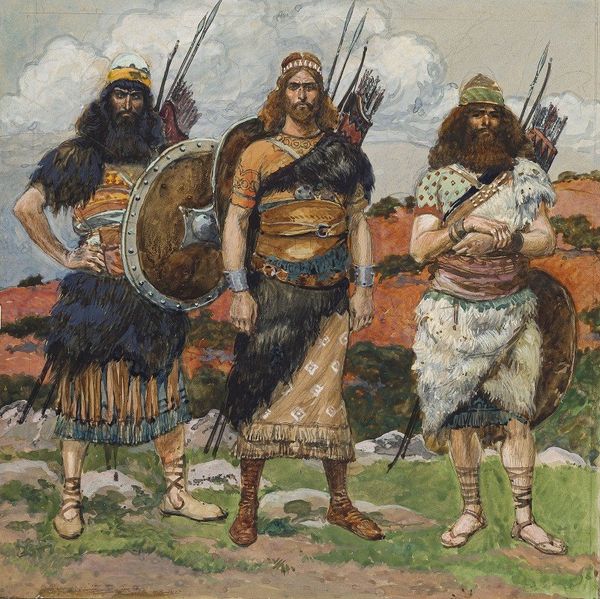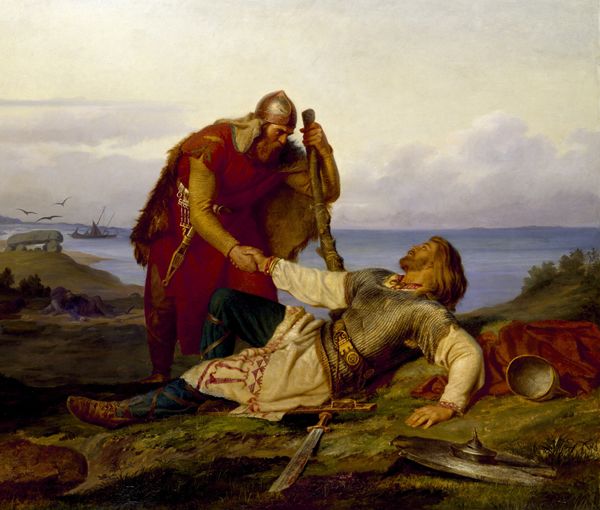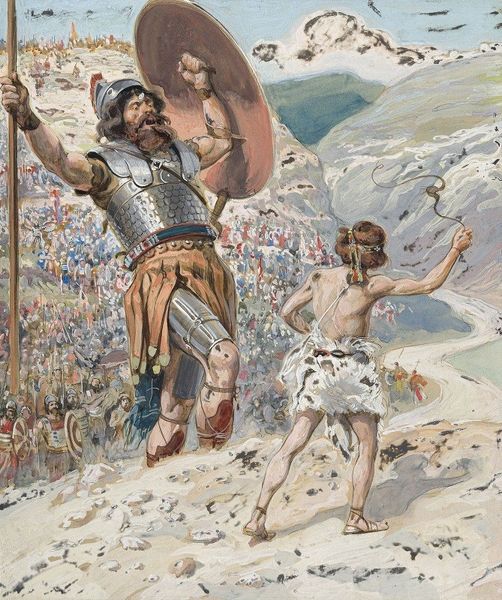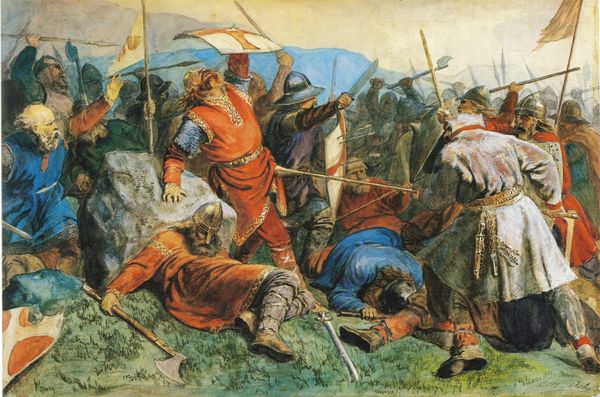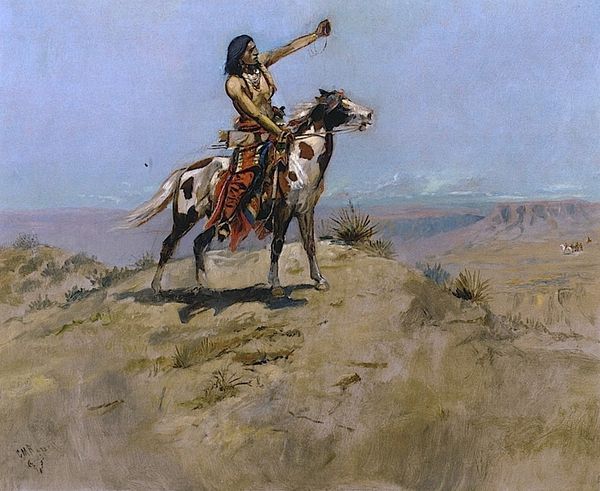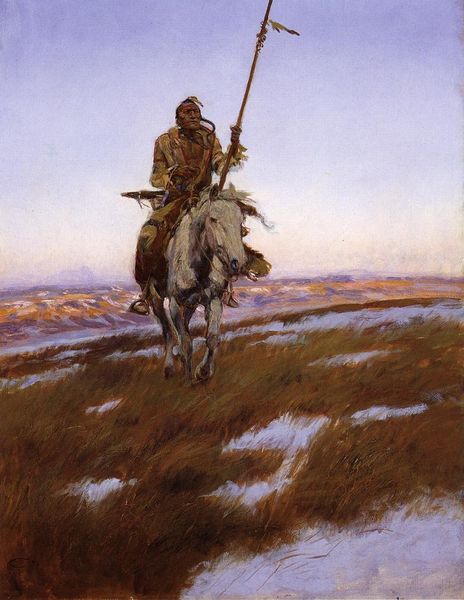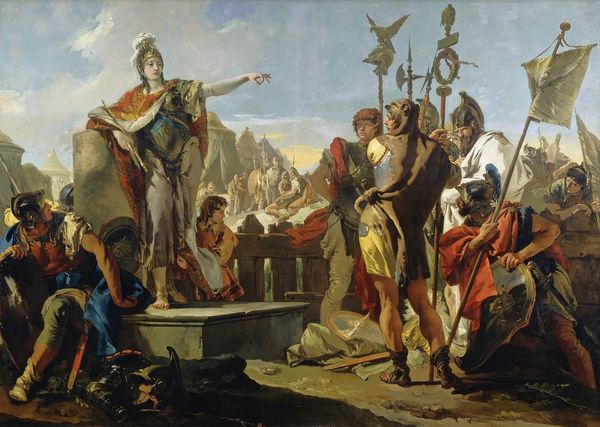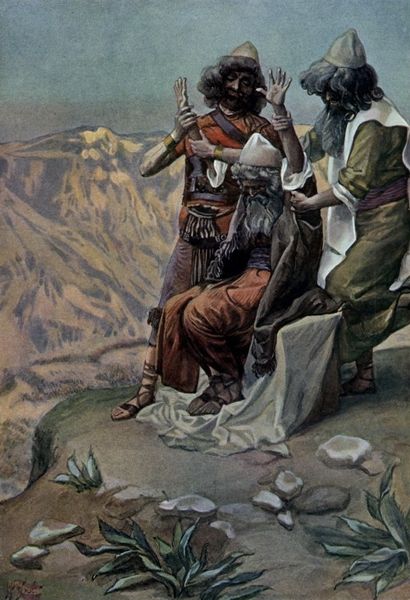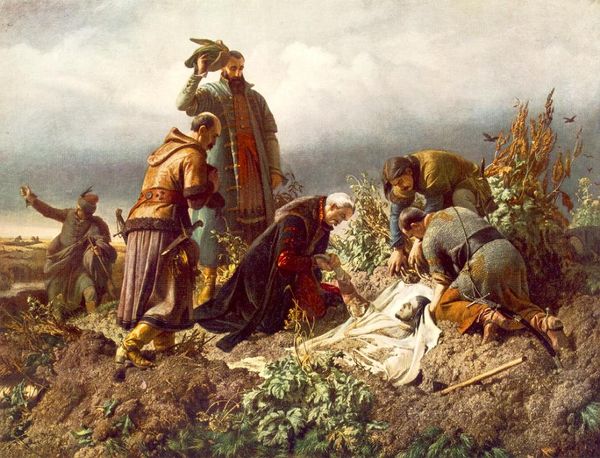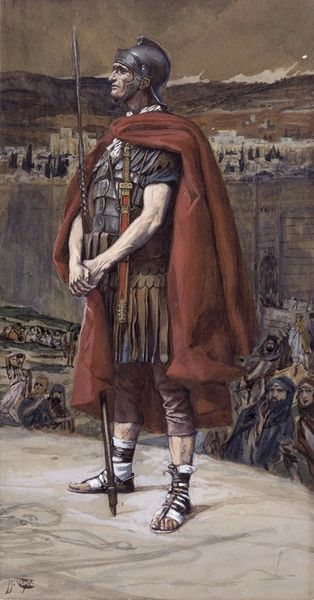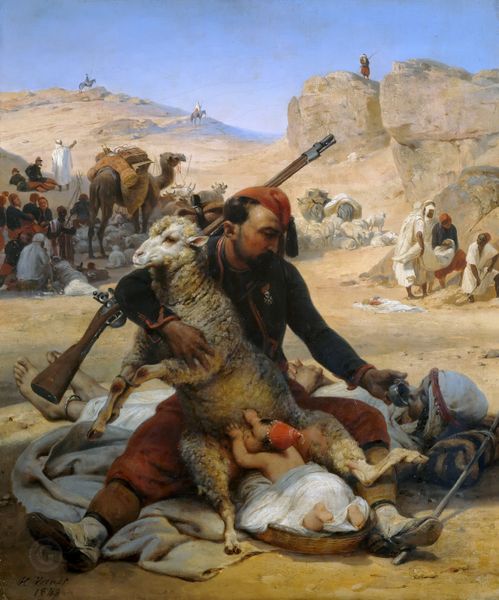
painting, watercolor
#
portrait
#
painting
#
landscape
#
oil painting
#
watercolor
#
romanticism
#
genre-painting
#
academic-art
#
watercolor
Dimensions: 48 x 69 cm
Copyright: Public domain
Editor: Here we have "Greek Warrior," a watercolor painting, by Carl Haag. I’m struck by the almost photographic detail of the clothing, especially given the looser brushwork in the landscape behind the figure. How do you read this contrast, and the work more generally? Curator: I see a figure poised between a romanticized vision of the past and the socio-political realities of 19th century Greece. The highly detailed costume is almost ethnographic, reflecting Western European interest in “exotic” cultures and their struggles for independence. Notice, however, the way the loose brushstrokes in the background almost dissolve the classical ruins. Editor: Are you suggesting the setting is more symbolic than documentary? Curator: Precisely. Haag, like many European artists of his time, was drawn to the Greek War of Independence. But he filtered this through a romantic, almost orientalist lens. He presents a vision of resistance, but framed by Western European expectations and desires for a 'pure', classical past being reclaimed. Consider also the gaze of the warrior himself. Where is he looking? Editor: Away, into the distance it seems. It does feel more staged than authentic. Curator: Indeed. Consider how this image might have been used to generate support for the Greek cause in Europe. And also how the very act of depicting the warrior contributes to constructing an identity – both for external consumption, and potentially for the Greeks themselves. It’s a complex intersection of history, identity, and artistic representation. Editor: I never thought about how supporting a movement could have these hidden layers, a perspective that changes the work's message completely. Thank you. Curator: It's a necessary reflection when viewing art engaged in socio-political topics and representations. Art reflects more than its obvious themes; it reveals context.
Comments
No comments
Be the first to comment and join the conversation on the ultimate creative platform.

